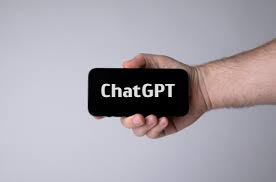ChatGPT is a language model developed by OpenAI, based on the GPT-3 architecture. It is designed to generate human-like text responses given a prompt or input text. Here's a complete guide on how ChatGPT works:
Training Data: ChatGPT is trained on a large corpus of text from the internet, which includes books, articles, websites, and more. This extensive training data allows it to learn patterns, grammar, and facts from a wide range of sources.
Transformer Architecture: Like its predecessor GPT-3, ChatGPT is built on the Transformer architecture. This architecture is composed of multiple layers of attention mechanisms, which enable it to understand and generate text based on context.
Fine-Tuning: After pre-training on the large dataset, ChatGPT undergoes fine-tuning. During this phase, it is trained on a narrower dataset with human reviewers providing feedback and guidance. These reviewers follow specific guidelines provided by OpenAI.
Prompting: To use ChatGPT, you provide it with a text prompt or input. This prompt can be a question, a statement, or a conversation starter. ChatGPT then generates a text response based on the context provided in the prompt.
Contextual Understanding: ChatGPT uses the context in the prompt to generate its responses. It doesn't have memory of past interactions, so it relies entirely on the information provided in the current interaction.
Response Generation: ChatGPT generates responses by predicting the most likely next word or phrase based on the input it receives. It takes into account the context and tries to produce coherent and contextually relevant text.
Diversity and Creativity: ChatGPT can produce a wide range of responses, from factual and informative to creative and imaginative. It's designed to be flexible in its responses, which can sometimes result in diverse or surprising outputs.
Safety Measures: OpenAI has implemented safety measures to mitigate harmful or inappropriate content. Despite these measures, ChatGPT may still generate incorrect or biased information, so it's important to use it responsibly and critically.
API Access: OpenAI provides access to ChatGPT through an API (Application Programming Interface), which allows developers to integrate it into applications, websites, and services. The API provides programmatic access to ChatGPT's capabilities.
Usage and Cost: Access to ChatGPT through the API typically comes with a cost, and usage is often metered based on the number of tokens (words) processed. The cost may vary depending on the level of usage and the type of API subscription.
Customization: OpenAI may offer customization options for ChatGPT, allowing developers and organizations to fine-tune the model to better suit their specific needs. This can include tailoring its behavior or domain expertise.
Ongoing Development: OpenAI continually works to improve and update ChatGPT based on user feedback and requirements. This includes addressing limitations and enhancing its capabilities over time.
It's important to note that ChatGPT is a tool, and its responses are generated based on statistical patterns in the training data. While it can be a valuable resource for various tasks, users should exercise caution and critical thinking when using it, particularly for making important decisions or seeking authoritative information. Additionally, OpenAI encourages responsible usage and provides guidelines to help users make the most of this technology while minimizing potential risks.



